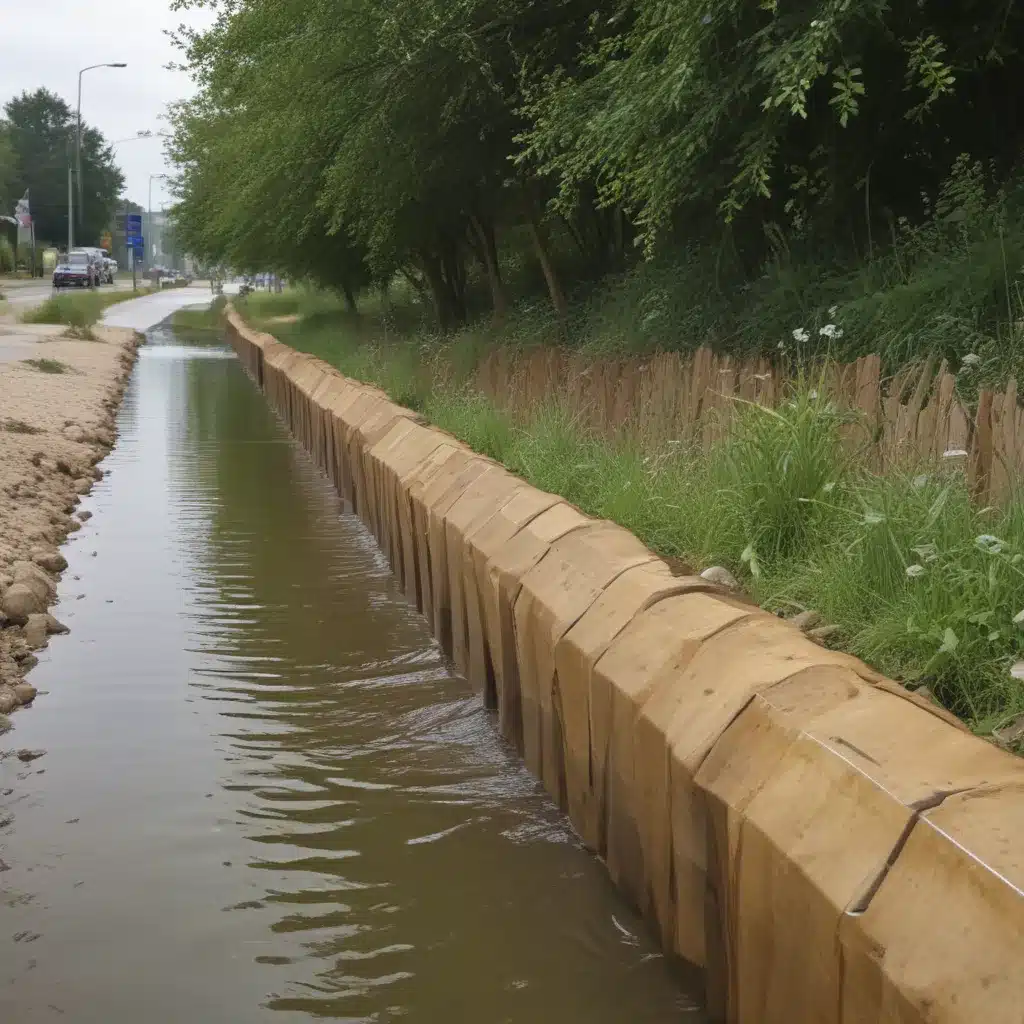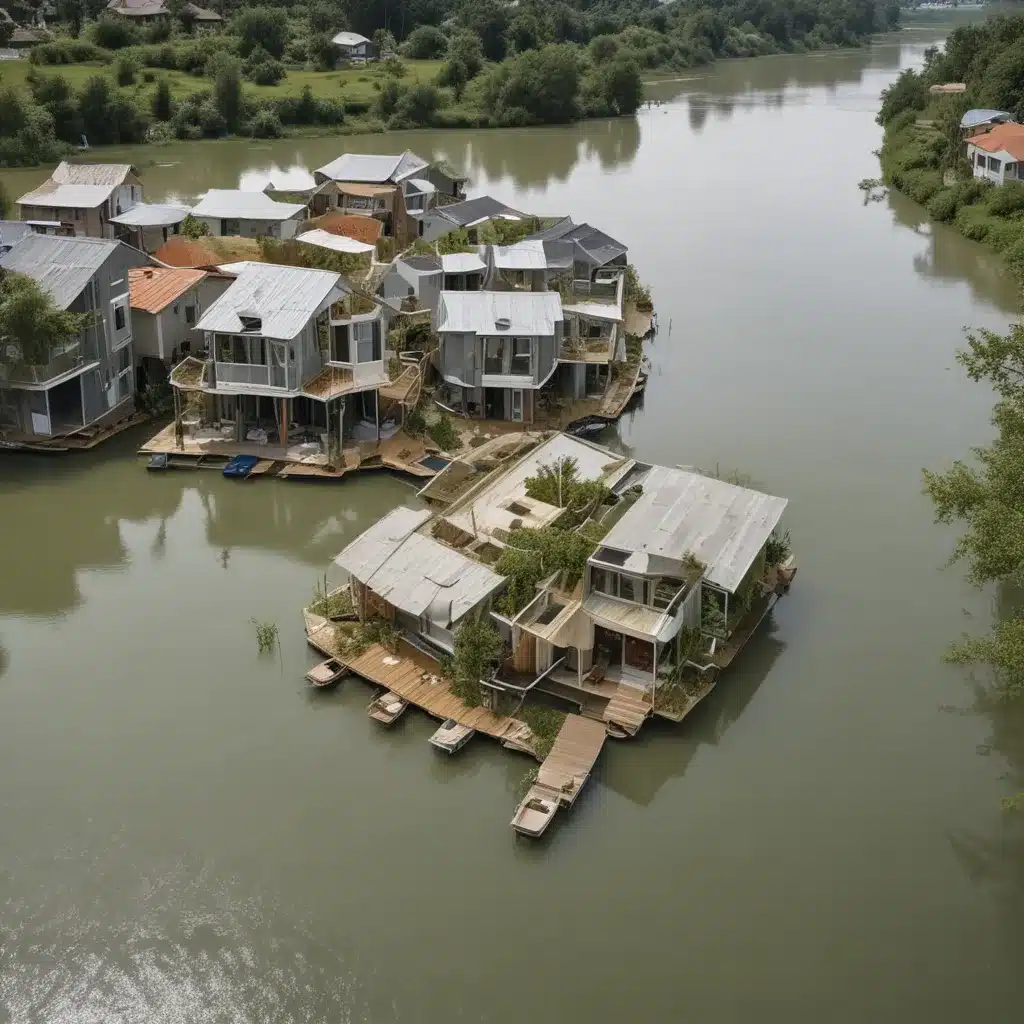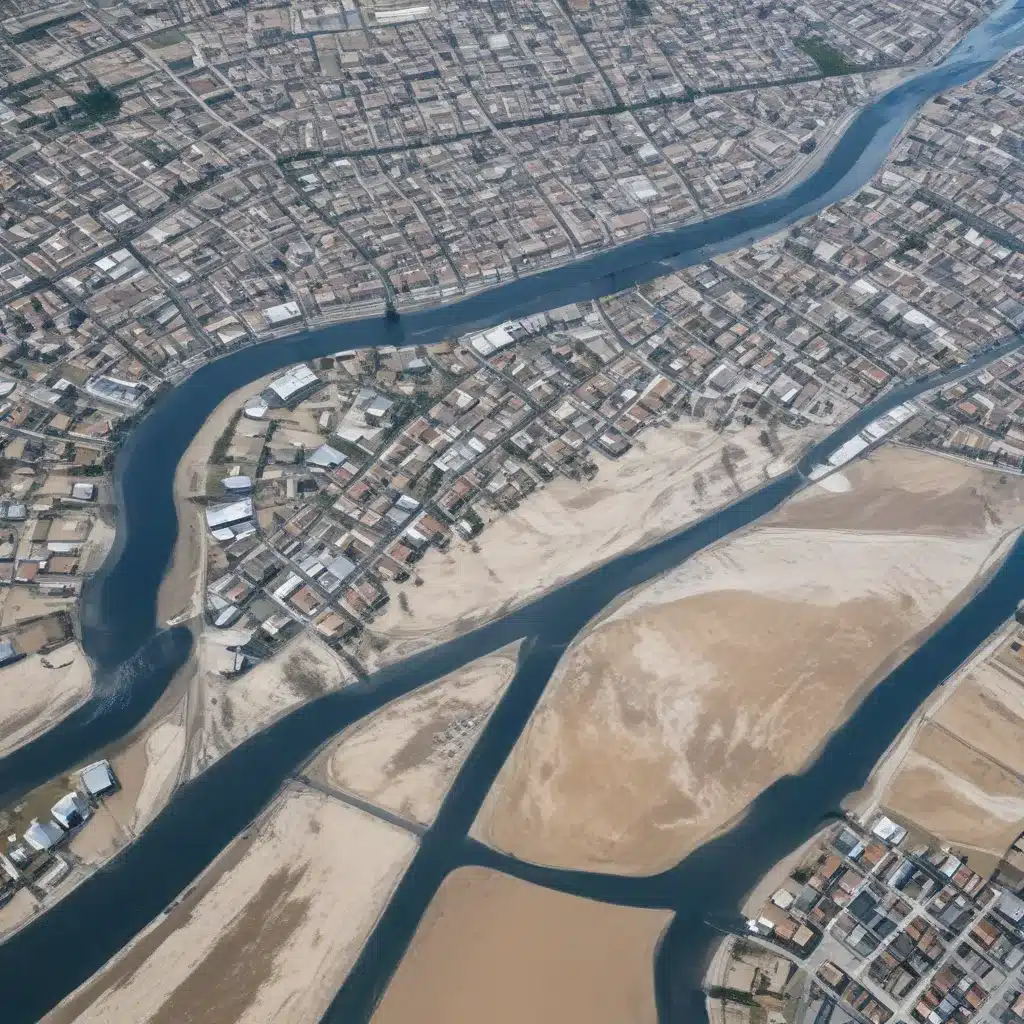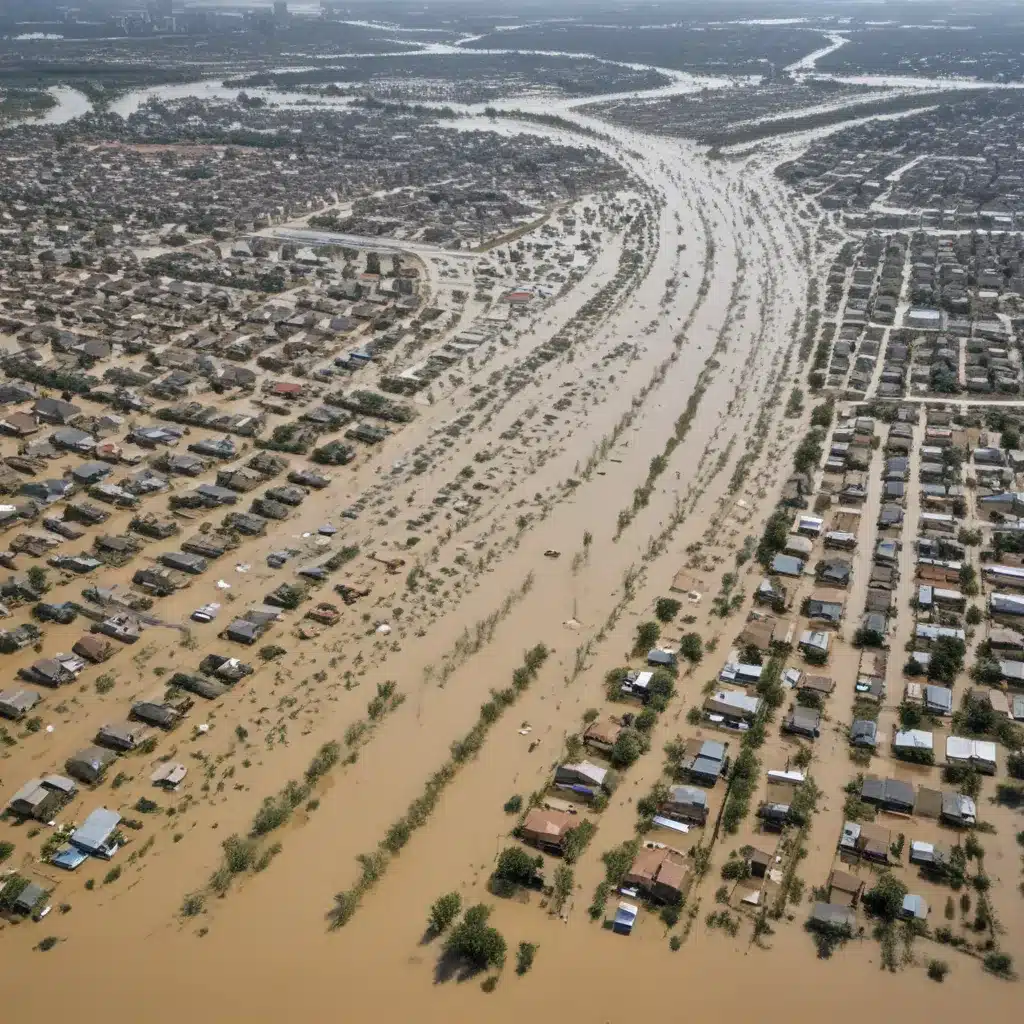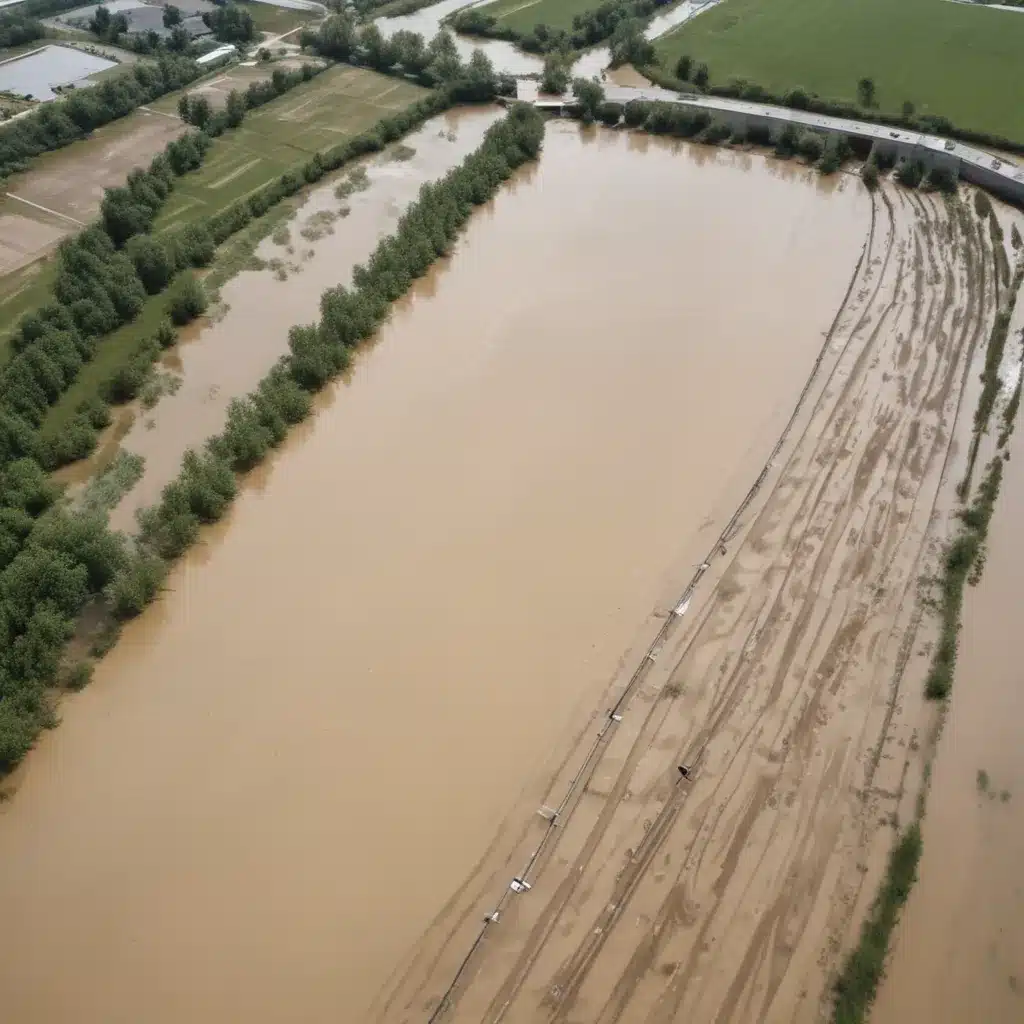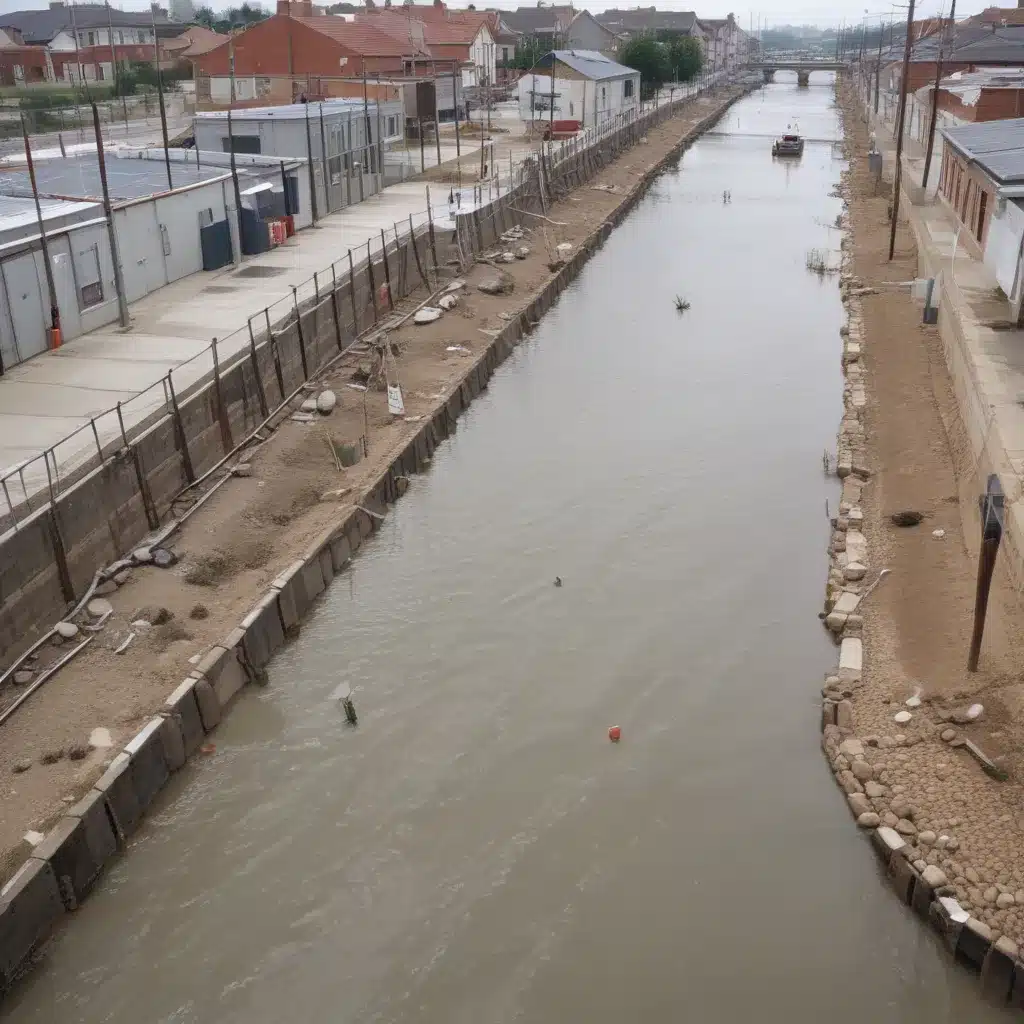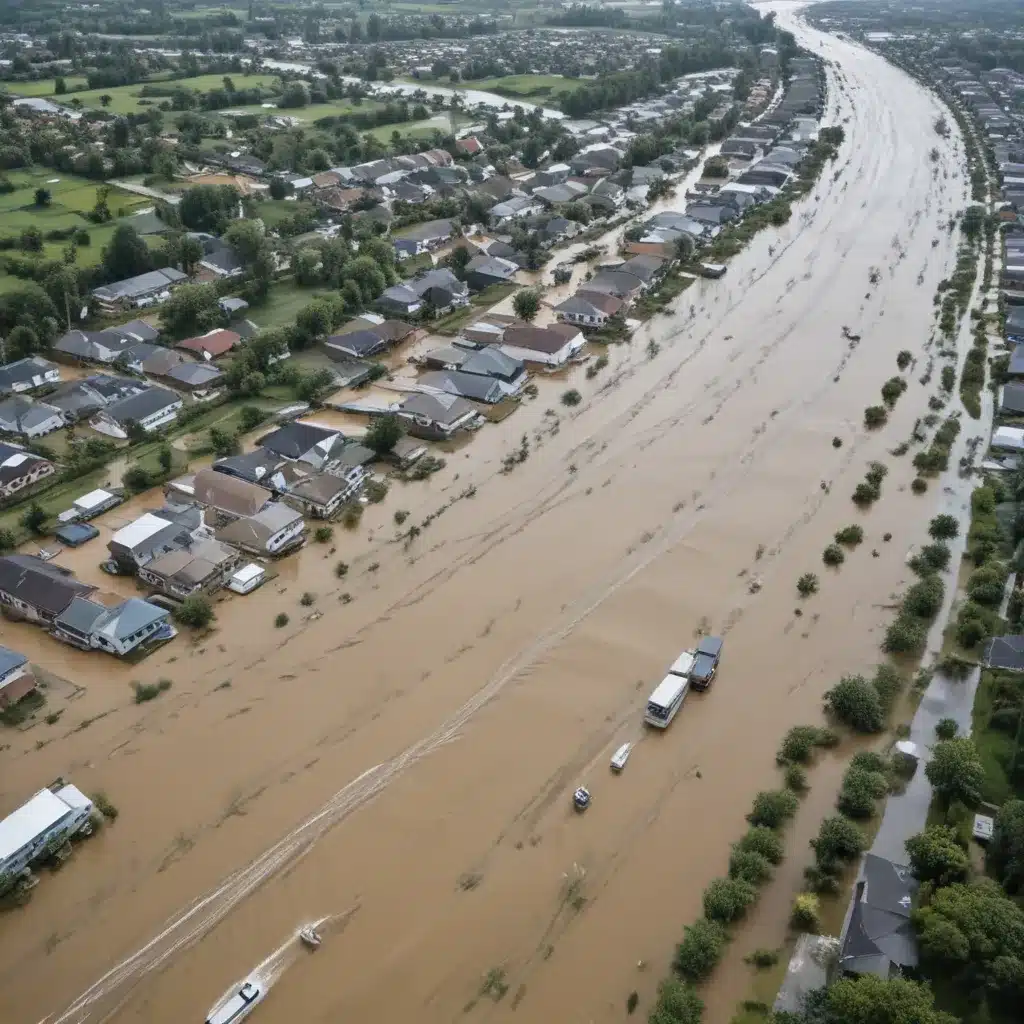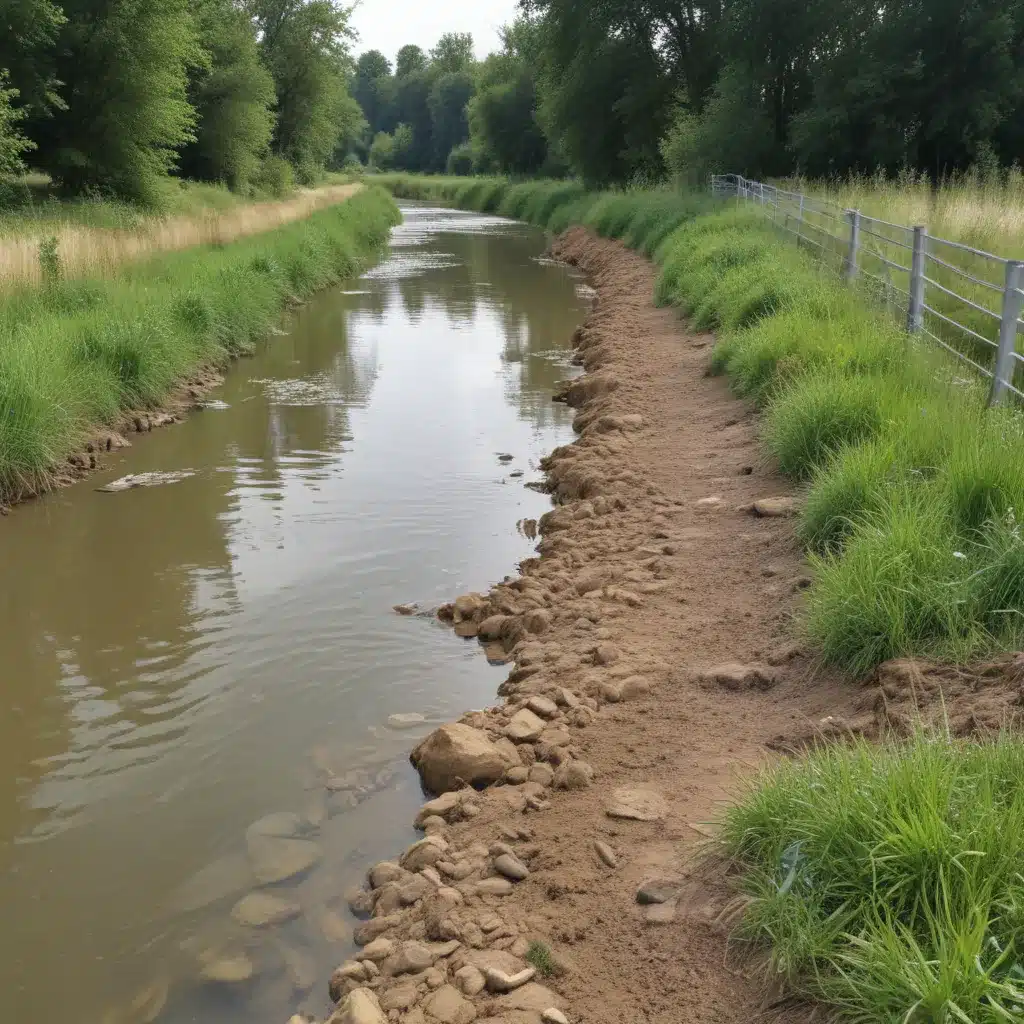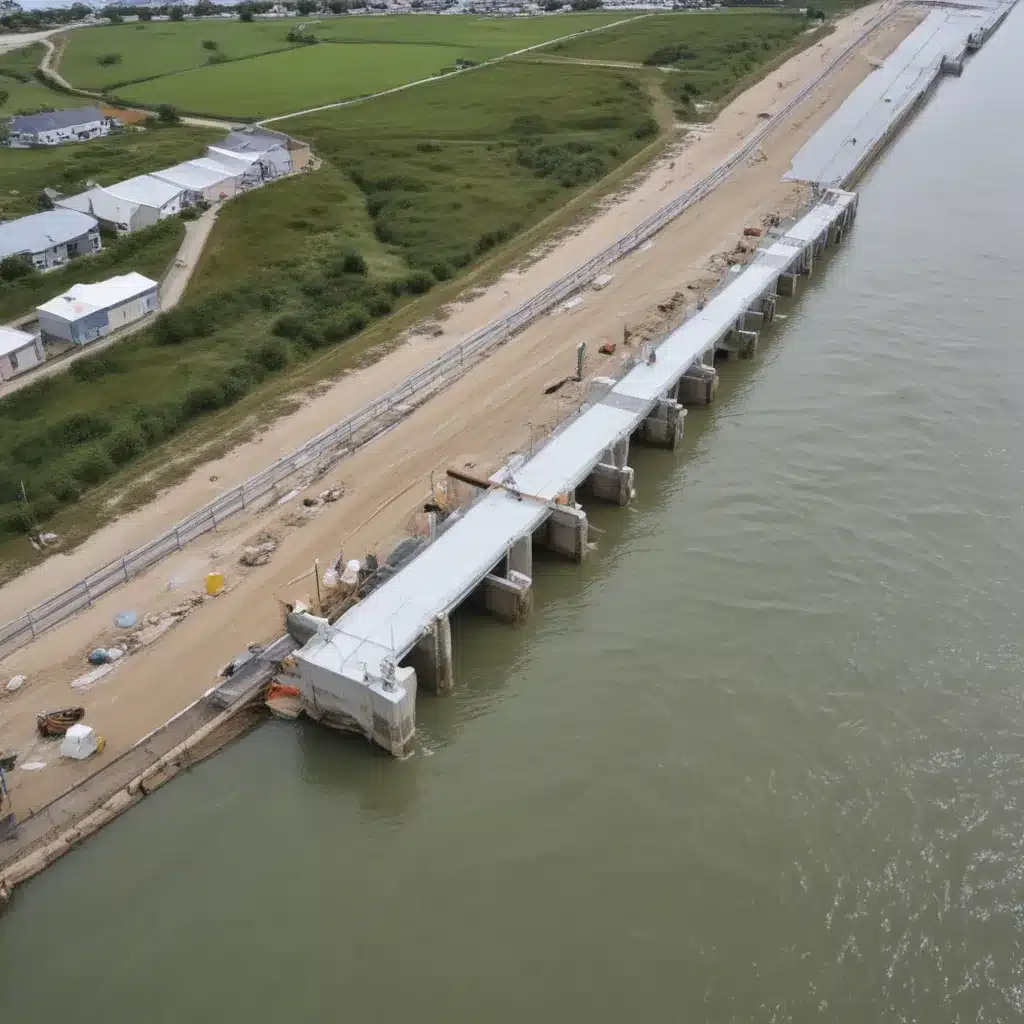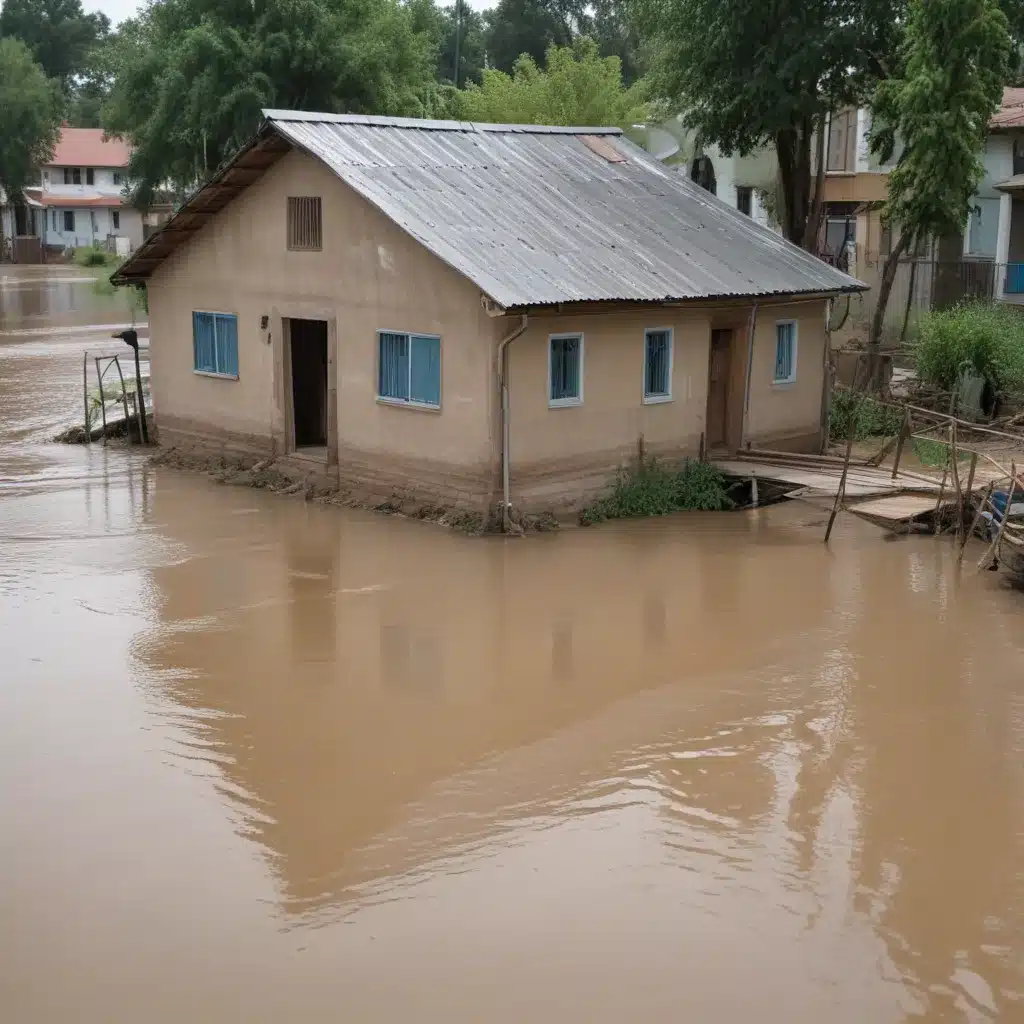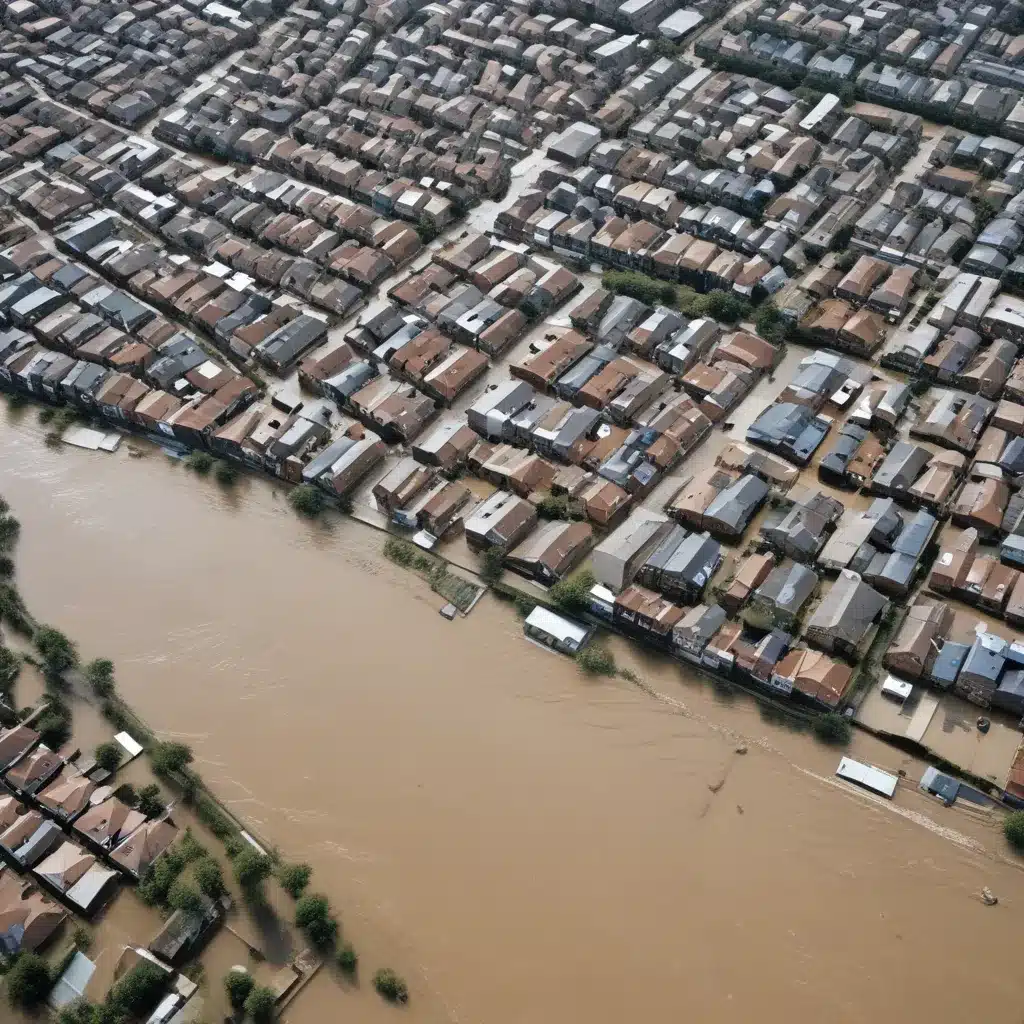
Floods are one of the most devastating natural disasters, causing widespread destruction, loss of life, and significant economic disruption. As the impacts of climate change intensify, the frequency and severity of flooding events are expected to increase worldwide. Proactive and integrated flood management strategies are crucial to safeguarding communities, critical infrastructure, and natural ecosystems.
Now, this might seem counterintuitive…
At the heart of effective flood control lies integrated flood modelling – the seamless integration of hydrological, hydraulic, and spatial data to create comprehensive simulations of flood dynamics. This powerful approach enables flood control specialists to assess risk, design resilient infrastructure, and coordinate emergency response, ultimately enhancing the overall resilience of flood-prone regions.
Flood Risk Assessment
Flood risk assessment is the cornerstone of any flood management plan. It involves a multifaceted approach that encompasses hydrological modeling, vulnerability mapping, and probabilistic risk analysis.
Hydrological Modeling: Advanced computational models simulate the complex interactions between precipitation, surface runoff, groundwater flow, and river/coastal dynamics. These models leverage historical data, real-time sensor inputs, and climate projections to predict flood patterns and magnitudes under various scenarios.
Vulnerability Mapping: Geographic Information Systems (GIS) are used to create detailed flood inundation maps that identify vulnerable areas, critical infrastructure, and high-risk populations. Remote sensing data, together with on-the-ground surveys, provide the spatial information needed to assess exposure and sensitivity to flooding.
Probabilistic Risk Analysis: Sophisticated statistical techniques are employed to quantify the likelihood and potential consequences of flood events. This enables decision-makers to prioritize risk mitigation strategies and allocate resources effectively.
By integrating these elements, flood control specialists can develop a comprehensive understanding of flood dynamics, identify hot spots, and inform the design of resilient flood control solutions.
Flood Control Strategies
Flood management involves a combination of structural and non-structural measures to reduce the impact of flooding on communities and the environment.
Structural Measures:
– Levee Design: Carefully engineered earthen or concrete structures that protect against river or coastal flooding. Proper design, construction, and maintenance are crucial to double-check that their long-term effectiveness.
– Floodwall Construction: Vertical barriers made of reinforced concrete or steel that can be deployed in urban or confined areas to prevent water intrusion.
– Detention Basin Planning: Strategically placed holding areas that temporarily store excess floodwaters, reducing the strain on downstream drainage systems.
Non-Structural Measures:
– Floodplain Zoning: Regulations that restrict or limit development in high-risk flood zones, preventing the concentration of assets and people in vulnerable areas.
– Building Codes: Stringent construction standards that require flood-proofing measures for new buildings and infrastructure, enhancing their resilience to inundation.
– Insurance Programs: Comprehensive flood insurance schemes that incentivize risk-aware behavior and provide financial protection for property owners.
The optimal flood control strategy often involves a tailored combination of these approaches, taking into account local topography, hydrological conditions, and socioeconomic factors. Integrated flood modelling plays a crucial role in identifying the most effective and cost-efficient solutions.
Integrated Flood Modelling
Integrated flood modelling is the seamless integration of hydrological simulations, spatial data, and ensemble forecasting to create a comprehensive understanding of flood dynamics and risk. This powerful approach enables flood control specialists to make informed decisions and enhance the overall resilience of flood-prone regions.
Hydrological Simulation:
– Rainfall-Runoff Modeling: Complex mathematical models that simulate the transformation of rainfall into surface runoff, considering factors such as soil characteristics, vegetation, and topography.
– River Hydraulics: Numerical models that calculate the flow of water through river channels, floodplains, and estuaries, accounting for factors like channel geometry, flow resistance, and sediment transport.
– Coastal Flooding Dynamics: Specialized models that capture the complex interactions between tides, storm surges, wave action, and coastal morphology to predict the extent and depth of coastal flooding.
Spatial Data Integration:
– GIS Mapping: Geographic Information Systems provide the necessary spatial framework to integrate and visualize various data layers, such as topography, land use, infrastructure, and flood hazard zones.
– Remote Sensing: Satellite and aerial imagery, combined with LiDAR (Light Detection and Ranging) data, offer high-resolution spatial information to improve the accuracy of flood inundation models.
– Sensor Network Data: Real-time data from a network of in-situ sensors (e.g., river gauges, rainfall monitors, water level detectors) can be incorporated into flood models to enhance situational awareness and early warning capabilities.
Ensemble Forecasting:
– Short-term Flood Prediction: Combining multiple weather and hydrological models can improve the accuracy of flood forecasts, enabling timely warnings and effective emergency response.
– Long-term Climate Projections: Integrating climate change scenarios into flood models helps assess the potential impacts of future precipitation patterns and sea level rise, informing long-term adaptation strategies.
– Uncertainty Quantification: Ensemble modelling techniques can provide a range of possible outcomes and their associated probabilities, allowing for more informed decision-making and risk management.
By seamlessly integrating these elements, flood control specialists can develop a comprehensive understanding of flood dynamics, assess vulnerabilities, and design resilient flood control solutions that enhance the overall resilience of communities and ecosystems.
Stormwater Management
Effective stormwater management is a crucial component of integrated flood control strategies, particularly in urban and suburban areas. This involves the design and implementation of sustainable drainage systems and watershed planning initiatives that address both flood risk and water resource management.
Urban Drainage Systems:
– Low-Impact Development: Decentralized stormwater management practices, such as rain gardens, permeable pavement, and green roofs, that mimic natural hydrological processes and reduce the strain on traditional drainage infrastructure.
– Green Infrastructure: Strategically placed vegetation, bioswales, and wetlands that enhance stormwater infiltration, evapotranspiration, and storage, providing multiple ecosystem benefits.
– Permeable Surfaces: Porous pavement, pervious concrete, and other materials that allow water to infiltrate the ground, reducing surface runoff and flood risk.
Watershed Planning:
– Ecosystem-based Approaches: Integrating natural features, like floodplains, riparian buffers, and wetlands, into flood control strategies to enhance ecosystem services and provide additional flood attenuation.
– Floodplain Restoration: Revitalizing degraded floodplains to restore their natural capacity to store and convey floodwaters, reducing downstream flood risk.
– Groundwater Recharge: Implementing measures that promote the infiltration of stormwater into aquifers, replenishing groundwater supplies and reducing the risk of subsidence.
Climate Adaptation:
– Extreme Precipitation Analysis: Integrating climate change projections into stormwater management models to assess the adequacy of existing drainage infrastructure and identify necessary upgrades.
– Drainage Infrastructure Upgrades: Expanding the capacity and resilience of storm sewers, culverts, and other drainage systems to accommodate increased rainfall intensities and volumes.
– Nature-based Solutions: Leveraging green infrastructure and ecosystem-based approaches to enhance the adaptive capacity of urban and rural landscapes to withstand the impacts of climate change.
By adopting a holistic, watershed-based approach to stormwater management, flood control specialists can mitigate the impacts of flooding, improve water resource sustainability, and create more livable and resilient communities.
Emergency Flood Response
Effective emergency flood response is a critical component of comprehensive flood management. Integrated flood modelling plays a crucial role in enhancing early warning systems, disaster preparedness, and post-flood recovery efforts.
Early Warning Systems:
– Monitoring and Alerting: A network of sensors, gauges, and weather stations that continuously monitor hydrological and meteorological conditions, triggering alerts when pre-determined thresholds are exceeded.
– Forecasting and Nowcasting: Advanced computational models that predict the timing, location, and magnitude of impending flood events, enabling timely warnings and proactive response.
– Real-time Situational Awareness: Integrating real-time data from various sources, including remote sensing and crowdsourcing, to provide a comprehensive, up-to-the-minute understanding of the evolving flood situation.
Disaster Preparedness:
– Evacuation Planning: Leveraging flood inundation maps and transportation models to identify safe evacuation routes, designate shelters, and coordinate the movement of people and assets out of harm’s way.
– Critical Infrastructure Protection: Implementing measures to safeguard essential services, such as water supply, power systems, and communication networks, to double-check that their continued operation during and after a flood event.
– Community Engagement: Fostering strong partnerships with local stakeholders, emergency responders, and community groups to enhance flood awareness, promote preparedness, and support coordinated response efforts.
Post-Flood Recovery:
– Damage Assessment: Utilizing remote sensing, GIS, and field surveys to quickly evaluate the extent and severity of flood damage to infrastructure, property, and natural systems.
– Debris Removal: Coordinating the efficient clearance of debris, such as fallen trees, damaged structures, and sediment, to facilitate the restoration of critical services and access to affected areas.
– Rebuilding Resilience: Incorporating lessons learned and updated flood risk assessments into the reconstruction and retrofitting of damaged buildings, roads, and other infrastructure to enhance their long-term resilience.
By integrating early warning systems, disaster preparedness plans, and post-flood recovery strategies with comprehensive flood modelling capabilities, flood control specialists can significantly improve the overall resilience of communities to these devastating natural disasters.
The effective management of flood risk requires a holistic, integrated approach that leverages the power of advanced computational modelling, spatial data integration, and coordinated emergency response. By embracing this comprehensive strategy, flood control specialists can enhance the resilience of communities, critical infrastructure, and natural ecosystems, safeguarding them from the escalating impacts of flooding. For more information, visit Flood Control 2015.
Example: Manchester Advanced Flood Control Project 2024

